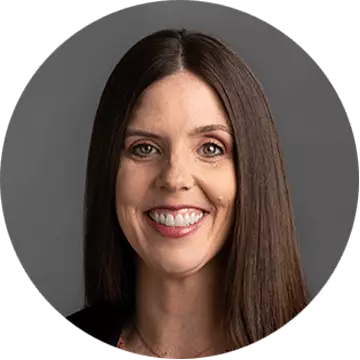What is a Scrum master?

µţ˛âĚýJonathan Dale

Reviewed by Kathryn Uhles, MIS, MSP, Dean, College of Business and IT

Anyone who has ever tried to lead a group project is probably familiar with just how challenging it can be to pull off. For as long as there have been project management problems, there have been attempts at solutions. Scrum is a solutions method growing in popularity due to its adaptability.
What does a Scrum Master do?
Companies are increasingly turning to Scrum to address complex issues and that's why the role of Scrum Master is a fast-growing and highly valued job within many companies. This role is at the heart of the Scrum process and team. He or she plays a pivotal role in solving problems so that developers can work on the product. Put simply, the Scrum Master is the facilitator of the Scrum team and is responsible for guiding the rest of the team through the Scrum framework, creating interteam dialogue, coaching, solving problems, and teaching best practices and theories for high-performance output.
Understanding Scrum
Scrum is an Agile methodology that’s an effective competitor to classic project management. As a process, Scrum uses close collaboration and adaptive development to solve problems, develop products and create value in a highly agile manner. Created by software developers, the Scrum methodology is highly applicable to software development. Many industries where Scrum is popular prioritize building out and growing software or proprietary technology in fast-paced markets. For example, as companies seek to build apps or websites so their customer base can connect online, Scrum can help developers solve the complex challenge of bringing a robust webpage to life.
Scrum Masters use Scrum methodology, or Scrum processes, to help reduce stress, crises and chances a collaborative project might fail. Scrum management, however, is a specialized process that necessitates training, potentially from an accredited university (either with traditional, in-person classes or straightforward online workshops, certificate programs, and classes.)
Scrum management can come in handy, for example, when an issue you didn’t foresee stalls progress or the work being produced doesn’t meet the expected outcome; problems can arise when the team and stakeholders are not on the same page.
As companies seek to respond to a changing world with new technologies and new demands, problem-solving methodologies like Scrum will continue to hold promise.
The five core values for Scrum
The top 5 traits of successful individuals in Scrum roles are:
- ąó´Çł¦łÜ˛őĚý— the ability to concentrate on the task at hand, the people conducting the task and the project overall and to not let outside elements or surprise problems sidetrack Scrum teammates
- µţ°ů˛ą±ą±đ°ů˛âĚý— while few Scrum projects are life-or-death situations, Scrum can certainly be applied to government, public service or outright rescue operations. In whatever field or role they serve, the Scrum master will need to brave storms both external and internal (on the Scrum team and within the company, potentially), and have an iron will for tough situations and to make important recommendations.
- °ä´Çłľłľľ±łŮłľ±đ˛ÔłŮĚý— while you may not see a particular project as crucial for your own life and career, think about it this way: Are you devoted to your job? Are you hoping to move up in the world? Periodically remind yourself that the course of your professional life depends on the outcome of your current project. Commit to ensuring its ultimate success.
- Mutual respect —  each other as “capable, independent people," according to the Scrum values outlined on Kissflow. While discussing or communicating by text, email or phone, it’s important to maintain professional decorum, and the Scrum master might set the tone — or ruin it with the wrong, disrespectful tone or pronouncement. Instead, every time you address someone or talk about the group, think about whether you would call what you’re about to say "respectful" if it were directed at you.
- Professional openness — directness, openness, honesty, thoroughness, accountability — all these things are important in a successful Agile project and in working as a Scrum Master or project manager in general. Work to better yourself by improving and firming up your own integrity and truthfulness without crossing the line into unprofessional, personal oversharing. If you can eliminate selfishness, people will note your value as a team member and be more willing to share their professional struggles too.
What is the difference between Scrum master and project manager?
While Scrum master and project manager might seem like similar positions, they are not the same and should not be treated as such. A typical Scrum team has no project manager. Instead, the Scrum master and a product owner share those responsibilities.
A Scrum master is responsible for facilitating the Scrum process and ensuring that every team member is aware of the process. Sometimes referred to as a "servant-leader," they keep everyone on the same page so team members can do what they do best instead of worrying about the Scrum method. The Master is a team leader whose primary focus is on the people and interactions needed to help the team achieve their commitment to delivering value.
´ˇĚýproject manager is more concerned with tracking progress by using product road maps to strategize and establish product objectives.
While these two roles are different and should not be conflated, they will often share characteristics, such as leadership, organizational skills and an ability to connect with the team in meaningful ways to create value and achieve high performance.
Responsibility |
Project Manager |
Scrum Master |
General project role |
Oversees all or almost all aspects of a project |
Serves as a kind of coach, facilitating a quest for quality, on-time deliverables, etc. |
Specific directives on most projects |
Strategizes for the entire project, including outlining each step, keeping a budget, running interference or updating higher-ups, funders, etc., and tracking progress and results |
Handles meetings, one-on-one or group coaching, and determines whether the project is on target (deadlines being met, products being produced are adequate, etc.), and helps teams adjust to meet goals |
Documentation |
Creates, manages and updates all forms  of documentation (Project Brief, PID, Budget, Risk log, Project Plan, Gantt chart, etc.), |
Creates, manages and updates no documentation at all |
Requirements |
Divvies up work at the beginning and delegates responsibility when new needs arise and tracks whether requirements are met |
Not a manager, does not have specific directives beyond their general job description on each individual project |
Motivating staff |
As a manager, their job is to make sure people are motivated, effective, and working at a pace that gets the project completed on time. |
More focused on … helping people to understand and enact to the Scrum Framework," say The Volume Maximizers. |
How to become a Scrum master
There are online professional development courses that can help you learn Scrum fundamentals so you can put yourself on a path toward a fulfilling and valued career.
You can expect to learn how to identify common Agile and Scrum terminologies, how to explain the elements of the Agile framework, how to discuss the sprint process and how Scrum contributes to a project’s success.
Professional development courses like Scrum Fundamentals offer in-demand skills for a changing marketplace. The many benefits of professional development courses may include hands-on, skills-focused training that can be done on your own schedule. These have the potential to put you well on your way to pursuing certification.
An online course is a great step toward achieving a Scrum master certification. Additionally, there are other soft skills that aren’t as easily teachable. They include:
- Strong communication skills
- Leadership skills, especially for keeping a team focused
- Organizational skills
- The ability to see long-term goals and plan short-term actions to achieve them
Scrum and other Agile methodologies are an exciting and , according to the U.S. Bureau of Labor Statistics. A certified Scrum master is an esteemed role in many companies looking to add value to their product development process.
Ready to take a Scrum Master course?
If you’re interested in becoming a Scrum master, °®¶ą´«Ă˝ offers a stand-alone credit as well as a professional development course to help you get started. Read on to learn more about both offerings and determine which is the best for you.
Scrum Fundamentals is a self-led professional development course offered by °®¶ą´«Ă˝ that helps students learn how to build successful Agile teams using the Scrum framework. In this course, students learn common Agile and Scrum terminology, understand the sprint cadence and understand how the framework contributes to a project. The course is designed for professionals looking to better deliver complex solutions to their organizations as well as new learners hoping to help their organizations adopt Scrum and Agile frameworks.
Skilled learned in the course include:
- Sprint planning
- Goal development
- Sprint management
- Daily Scrum facilitation
As you work your way through this course, you’ll discover how concepts, principles and Scrum practices deliver value to organizations. Explore how three roles of an Agile team, five ceremonies and three artifacts at the heart of Scrum, come together to solve real-world problems. The course requires an estimated 30 learning hours for completion and can be accessed anywhere and at any time for one year.

ABOUT THE AUTHOR
Jonathan Dale is a freelance writer with a background in SEO content creation and blog article development.
This article has been vetted by °®¶ą´«Ă˝'s editorial advisory committee.Â
Read more about our editorial process.





